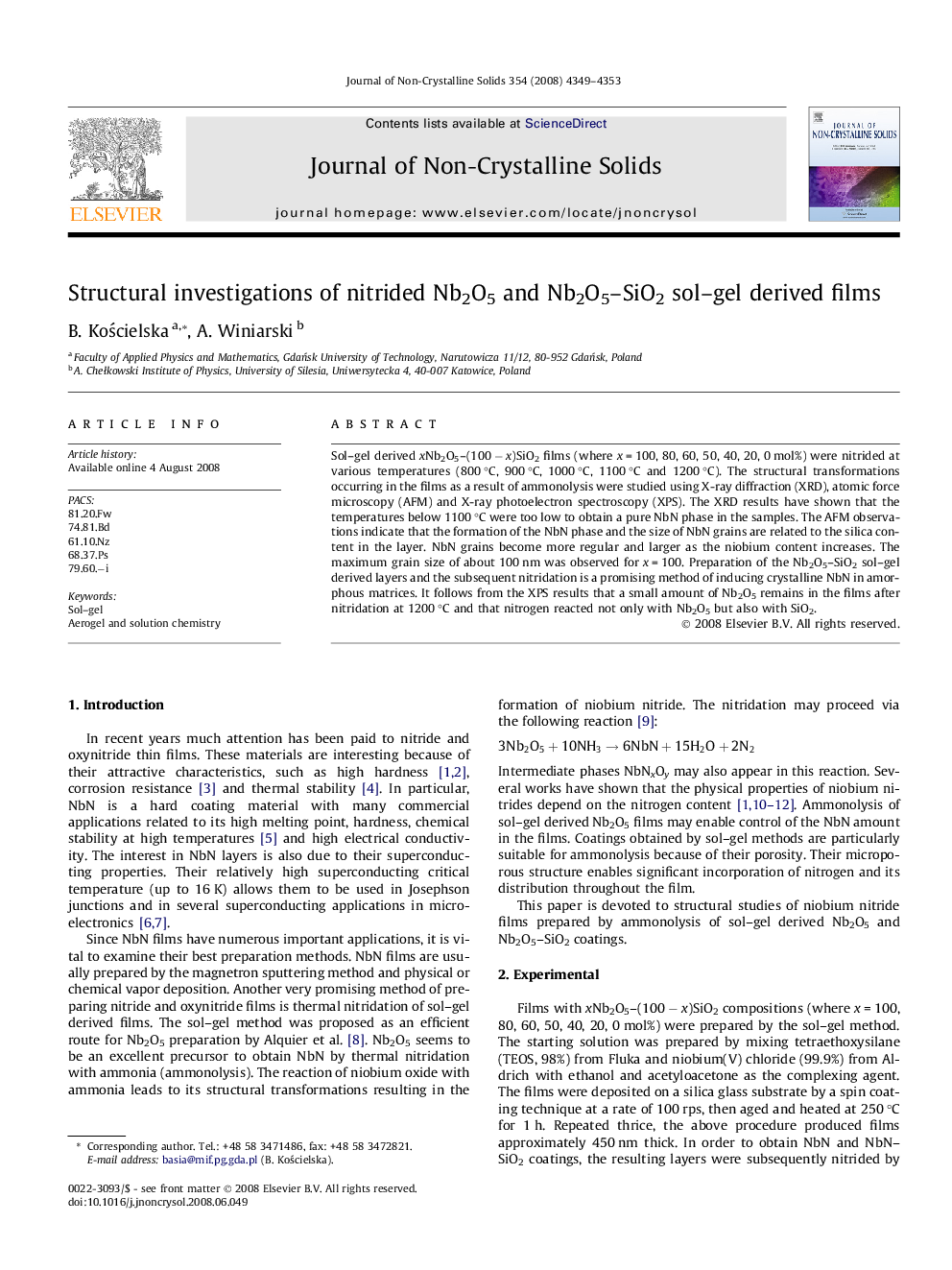| Article ID | Journal | Published Year | Pages | File Type |
|---|---|---|---|---|
| 1484459 | Journal of Non-Crystalline Solids | 2008 | 5 Pages |
Sol–gel derived xNb2O5–(100 − x)SiO2 films (where x = 100, 80, 60, 50, 40, 20, 0 mol%) were nitrided at various temperatures (800 °C, 900 °C, 1000 °C, 1100 °C and 1200 °C). The structural transformations occurring in the films as a result of ammonolysis were studied using X-ray diffraction (XRD), atomic force microscopy (AFM) and X-ray photoelectron spectroscopy (XPS). The XRD results have shown that the temperatures below 1100 °C were too low to obtain a pure NbN phase in the samples. The AFM observations indicate that the formation of the NbN phase and the size of NbN grains are related to the silica content in the layer. NbN grains become more regular and larger as the niobium content increases. The maximum grain size of about 100 nm was observed for x = 100. Preparation of the Nb2O5–SiO2 sol–gel derived layers and the subsequent nitridation is a promising method of inducing crystalline NbN in amorphous matrices. It follows from the XPS results that a small amount of Nb2O5 remains in the films after nitridation at 1200 °C and that nitrogen reacted not only with Nb2O5 but also with SiO2.
